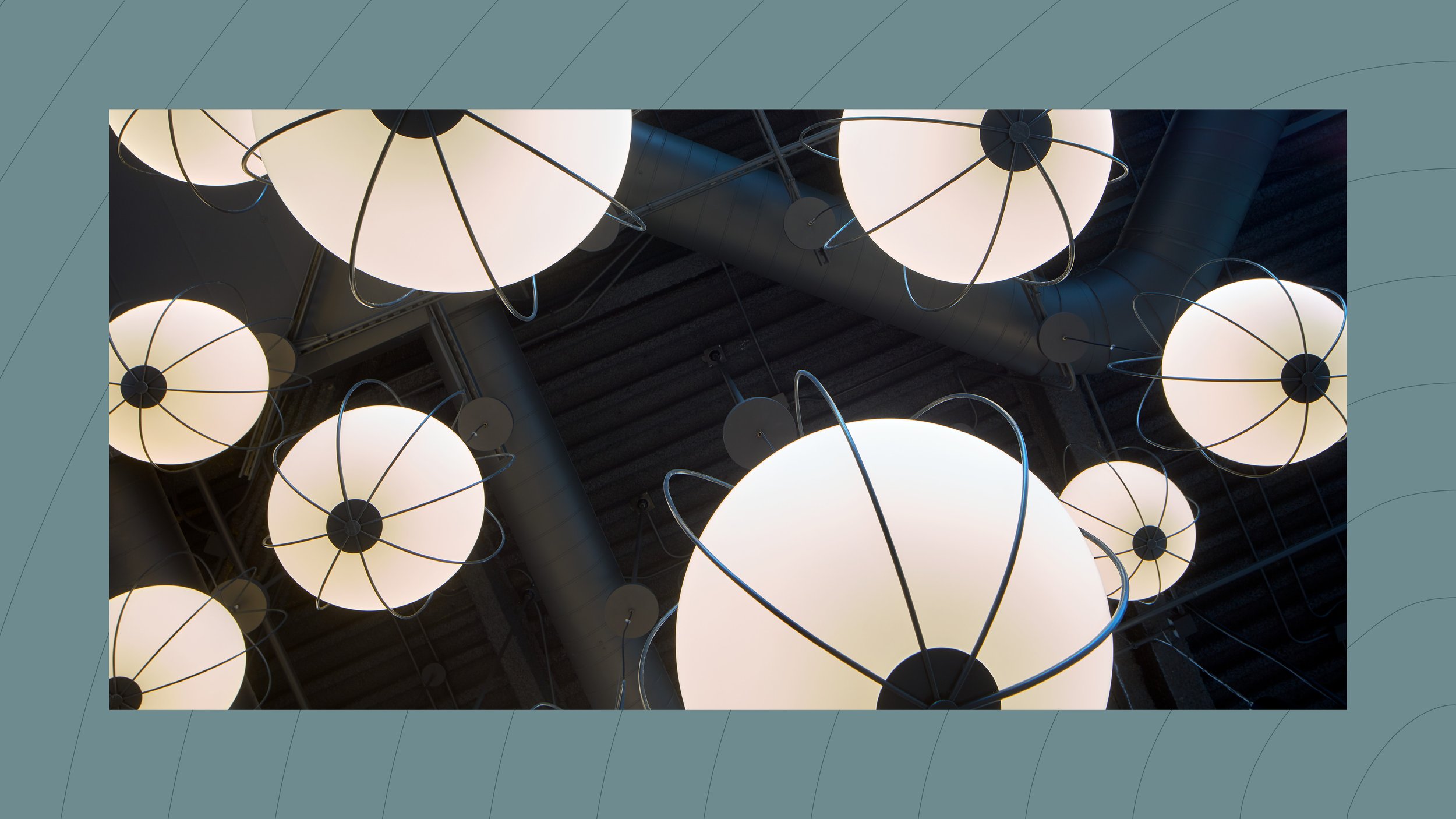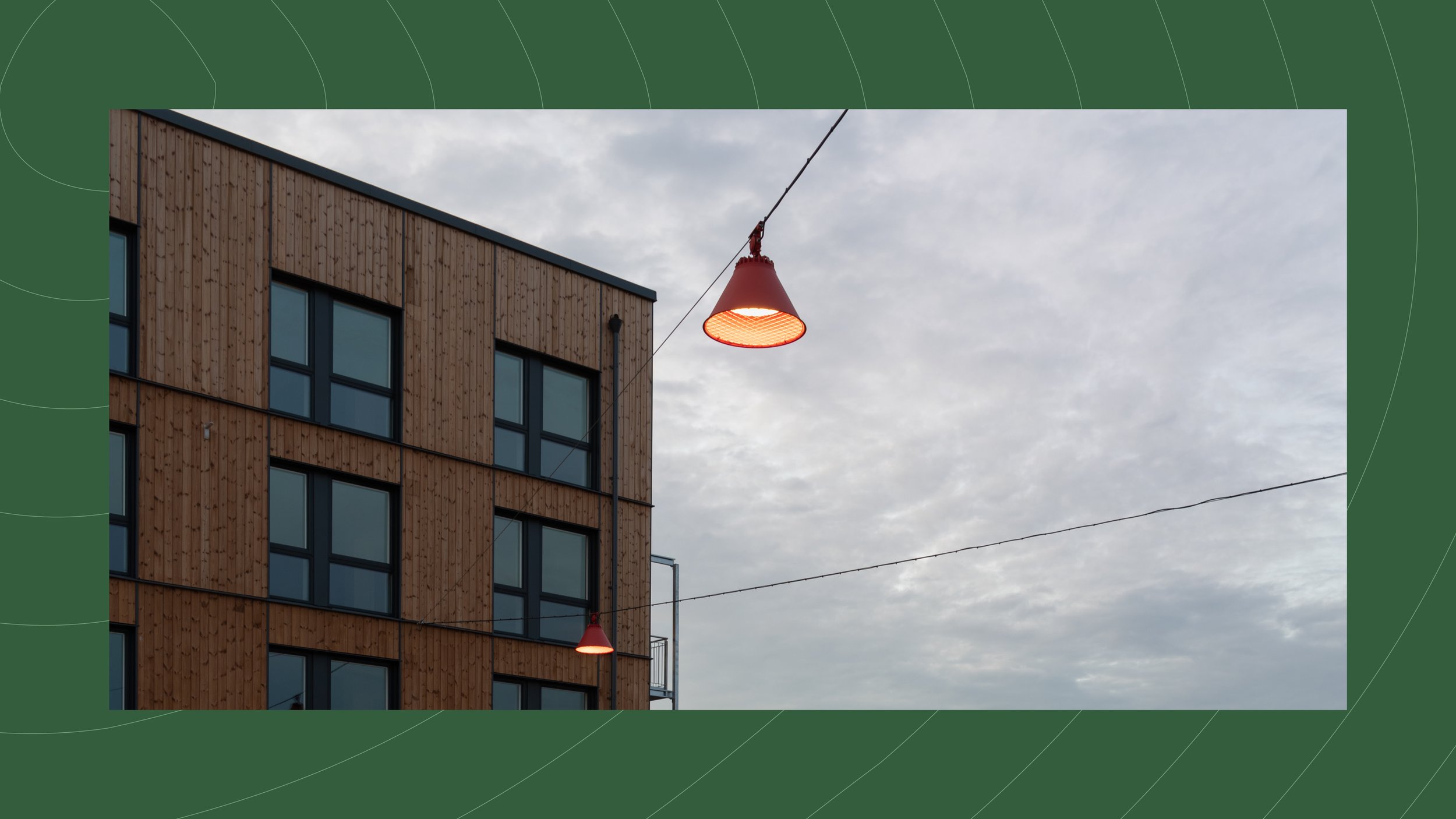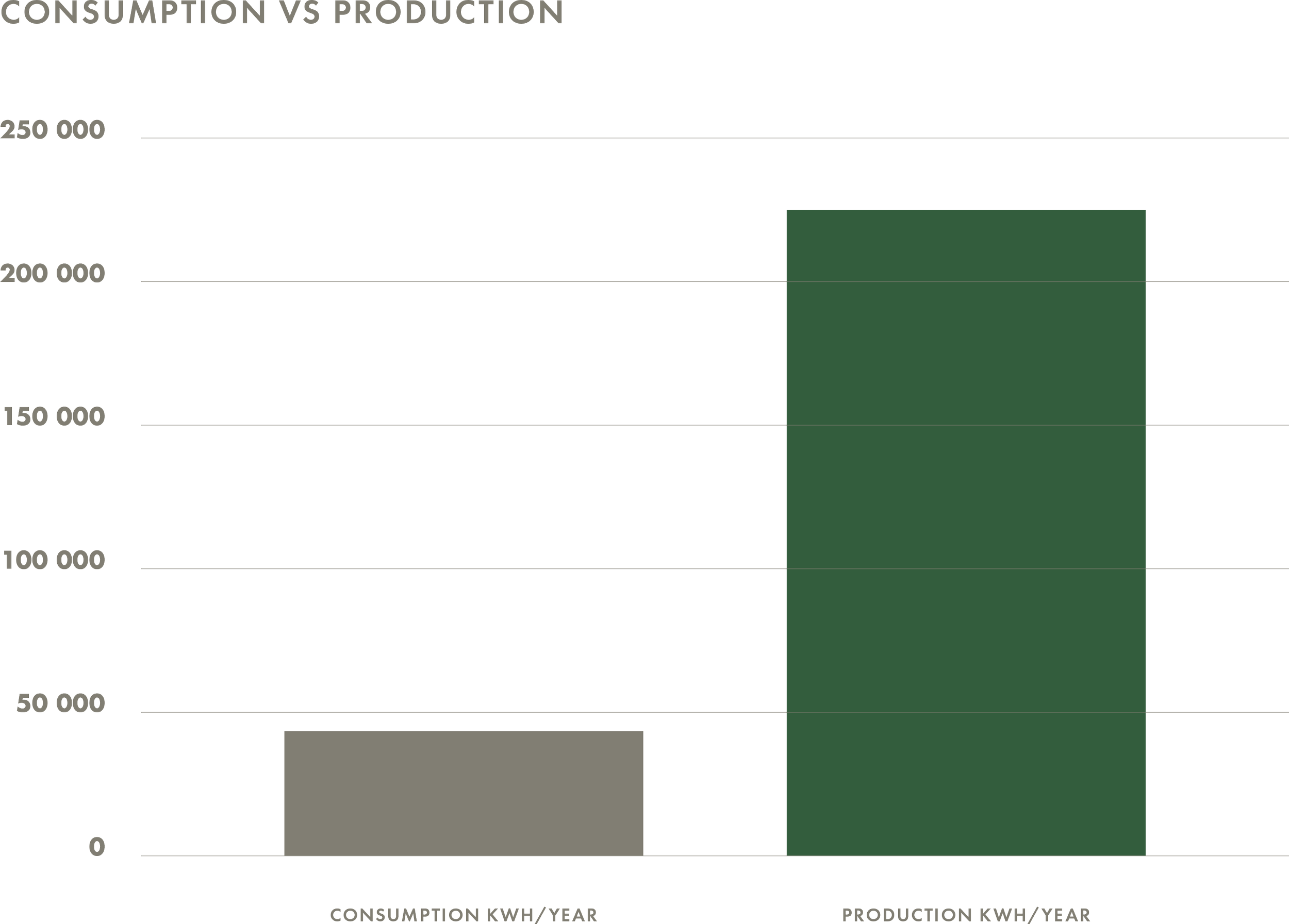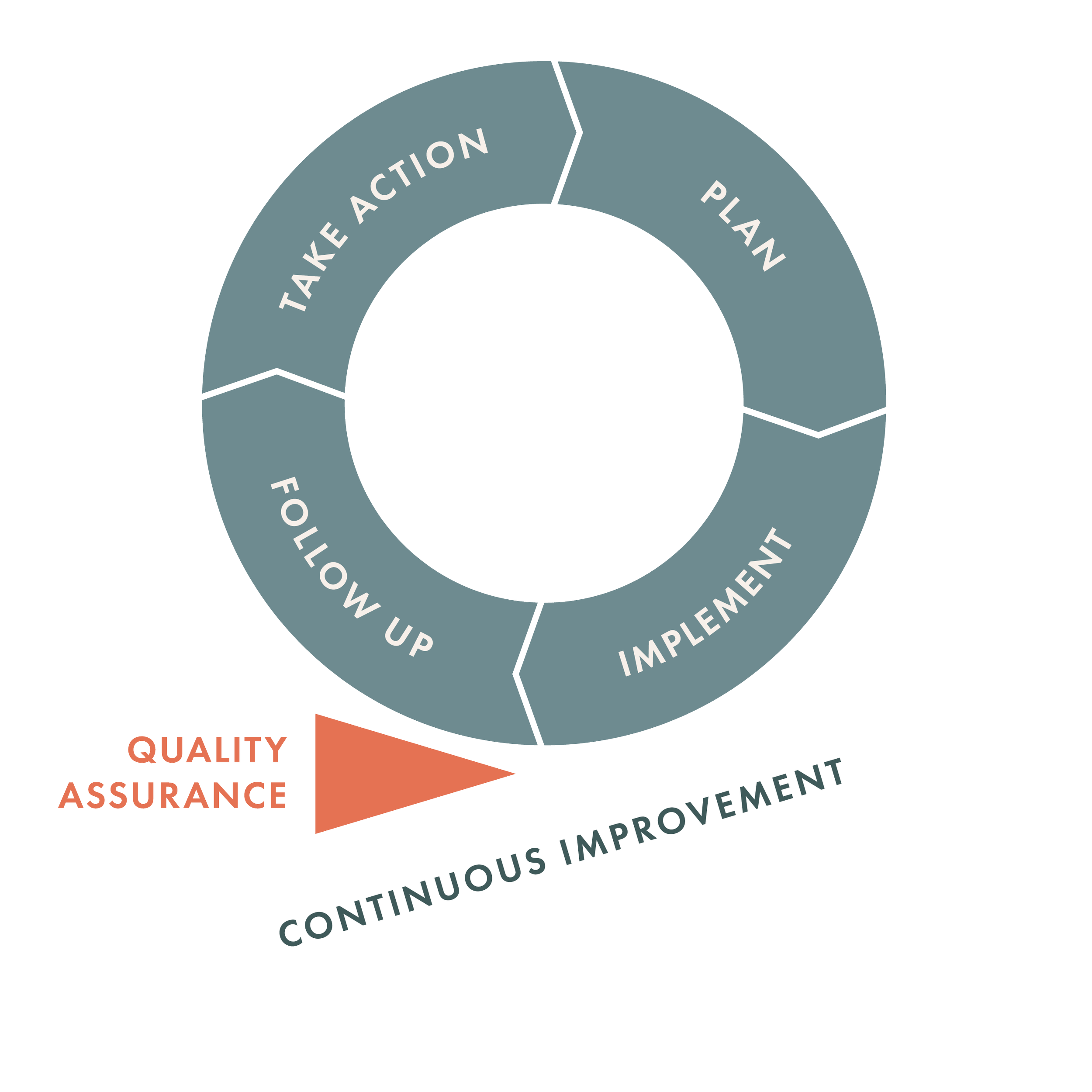A clear strategy towards ZERO emissions
We have a clear plan to make a difference, for real. We have selected a few areas where we can make the biggest difference. We focus on implementing concrete actions, not just setting targets. We set our targets, monitor results and improve our operations – all the time. For us, the mission is clear – ZERO emissions.
The goals that drive our sustainability journey
In our endeavour to be a pioneer in sustainability and social responsibility, we have actively engaged with several of the United Nations Sustainable Development Goals (SDGs). These goals serve as our guiding compass and direct our efforts to create a positive impact on both society and the environment. We have chosen to focus on five goals in particular and integrate them into our overall sustainability work, with the aim of contributing to a more just and sustainable future for all.
Reuse & Circularity
“Everything we create today should be reusable tomorrow”
Circularity is a central part of our sustainability strategy. Through our processes, we constantly strive to reduce waste, conserve resources, and promote the long-term sustainable use of lighting products. This is not only environmentally friendly but also cost-effective for our customers, with new or extended lifetime of existing lighting solutions. Overall, this reflects a holistic approach to creating a more sustainable and circular lighting industry.
-
– Zero offers reuse through remodelling, upgrading and repair of its own luminaires.
– Zero offers reuse through remodelling, upgrading and repair of products that are no longer produced by other manufacturers.
– Zero develops and designs its products in a modular way, which creates more opportunities for replacements and upgrades over time.
– Zero offers replacement LED inserts for most luminaires.
– Zero provides spare parts, LED modules and drivers that can be replaced by an authorised electrician.
– Zero sells products at a reduced price that have been used in exhibitions/trade fairs or as test luminaires.
-
– The goal is to achieve a full transition to upgradable luminaires by 2030. We aim to increase sales of reused products and to carefully measure and monitor the share of reuse in our operations.
Optimised energy efficiency
Our strategy is to constantly and actively work on improving the energy efficiency of our products and processes, by implementing measures that address every aspect of the luminaires’ life cycle. With our experience and knowledge of light and production together with the latest technological innovations and possibilities, our offer for energy efficiency with quality is very powerful.
-
– Increase the share of luminaires with dimmable switches and integrated control systems to minimise the energy consumption of products.
– Reduce the energy consumption of products during their life cycle.
– Develop and adapt products for a circular economy.
Eco-Conscious Materials
“We aim to use sustainable materials with minimal climate impact”
We strive to be a leader in the lighting industry in terms of sustainable materials and environmental responsibility. By focusing on several key principles and strategies, we have established a sustainability agenda that permeates our entire business. Our product design is not only aesthetically pleasing but also carefully considered to minimise environmental impact throughout the product’s life cycle. By prioritising resource efficiency and using recyclable or recycled materials, we strive to create solutions that not only meet high performance requirements but are also in harmony with the environment. We see this as a necessary effort to create a more sustainable and responsible future.
-
– Reduce the environmental impact of products throughout their life cycle.
– Achieve and maintain CO2 neutral operations.
– Develop products for the circular economy, simplifying the replacement of components throughout the life cycle.
– Increase the share of recycled materials in our products.
– Minimise the consumption of natural resources.
We produce more electricity
than we consume
Our production and our products require electricity – for us it is therefore important that we contribute where we can to secure the supply of electricity. Our production building’s photovoltaic system is a major step towards this, because we already produce more electricity than we consume. In addition we have set ourselves high goals to make it easier for end-users to produce renewable electricity. With the solar cell plant, we are a net producer of electricity; it currently produces 226,000 kWh annually, of which we use 46,000 kWh.
-
Current situation – 5 times more electricity production than we consume, 40% of subcontractors’ electricity generation is fossil-free.
-
2025 – 5 times more electricity production than we consume, 70% of subcontractors’ electricity production is fossil-free.
2030 – 5 times more electricity production than we consume, 90% of subcontractors’ electricity generation is fossil-free.
The road to more
sustainable transport
“When others need up to three trucks, we manage with two thanks to smart loading methods and optimised packaging.”
By focusing on the journeys taken by our all our raw materials and our products, both internally and to our customers, we can effectively reduce our climate impact. When we ship goods, we are smart, with our loading methods optimising space and therefore reducing the climate impact of each product. By maximising the number of goods in each truck, we minimise the need for transport from three cars to two.
In our internal transport, we have introduced creative measures to reduce the need for disposable packaging. Instead of using traditional disposable packaging, we pack our products in reusable blankets that we take back with us after each delivery. This method not only contributes to waste reduction but also creates a closed loop of packaging material, which is an important part of our sustainability strategy.
Through broad implementation of reuse principles in our internal logistics, the need for new packaging material is continuously reduced. An example of this is the reuse of corrugated cardboard pads. Instead of considering them as disposable products, we make sure that each pad is used several times before reaching the end of its life cycle and being recycled.
More than 80% of production takes place within roughly 200 km of Nybro in Småland and all assembly occurs in our workshop in Nybro.
-
We always use optimised packaging and smart loading methods to maximise cargo space.
-
2020 – 100% fossil fuel
2021 – 40% rechargeable
2024 - 70% rechargeable
-
2025 – 80% rechargeable
2030 – 100% rechargeable
Quality controls for continuous improvement
For us, continuous improvement means well-executed planning of each work step according to ISO9001 and ISO14001. We strive to ensure high quality and efficiency through every stage of the production cycle and this permeates the entire organisation, with each employee playing an active role in quality assurance of their work steps.
In production, we engage our employees in the process to ensure that every detail meets our high quality standards. This also involves creating a culture of continuous improvement and collaboration. Zero employees recognise the importance of their role in ensuring that every product that leaves our facility meets our expectations and those of our customers. After production, the production manager takes responsibility for evaluating the work and identifying any areas for improvement. This is done through a systematic and thorough follow-up of each work step. By engaging in an open dialogue with employees and listening to their experiences, the production manager creates an environment where everyone is involved in improving and maintaining high quality.
In case of any deficiencies, the production manager and employees jointly take the necessary actions to correct the situation. This includes identifying and implementing improvements in work processes, providing additional training if necessary, and ensuring that corrective actions are implemented in a timely and effective manner.
-
Delivery – Spot check
Painting – The painting company checks all parts before and after painting
Delivery after painting – Spot check
Picking for assembly – Spot check
Assembly – Fitter checks the parts
Testing – Electrical safety and function check according to CE
Packing – Final check before packing in a carton











